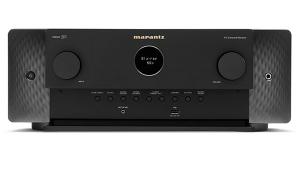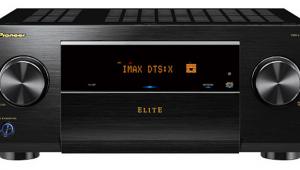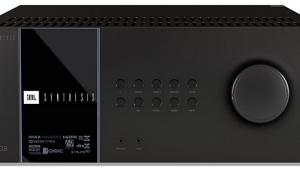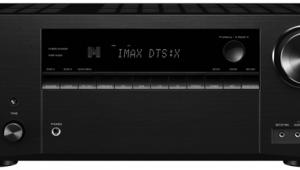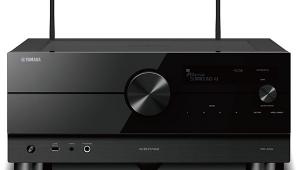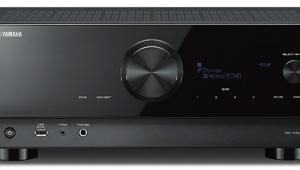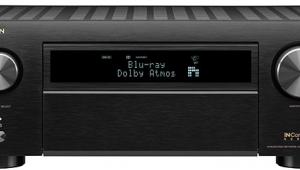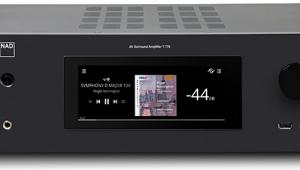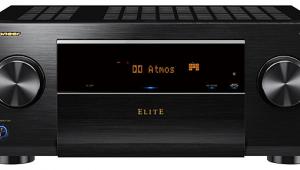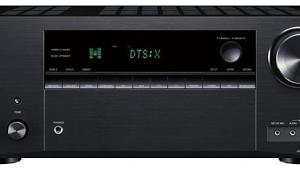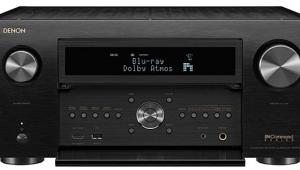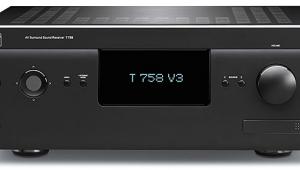Cambridge Audio Azur 551R A/V Receiver HT Labs Measures
Two channels driven continuously into 8-ohm loads:
0.1% distortion at 95.2 watts
1% distortion at 111.3 watts
Five channels driven continuously into 8-ohm loads:
0.1% distortion at 68.2 watts
1% distortion at 81.2 watts
Seven channels driven con-
tinuously into 8-ohm loads:
0.1% distortion at 61.7 watts
1% distortion at 69.4 watts
Analog frequency response in Analog Direct mode:
–0.22 dB at 10 Hz
–0.07 dB at 20 Hz
+0.07 dB at 20 kHz
–2.68 dB at 50 kHz
Analog frequency response with signal processing:
–0.84 dB at 10 Hz
–0.27 dB at 20 Hz
+0.10 dB at 20 kHz
–36.44 dB at 50 kHz
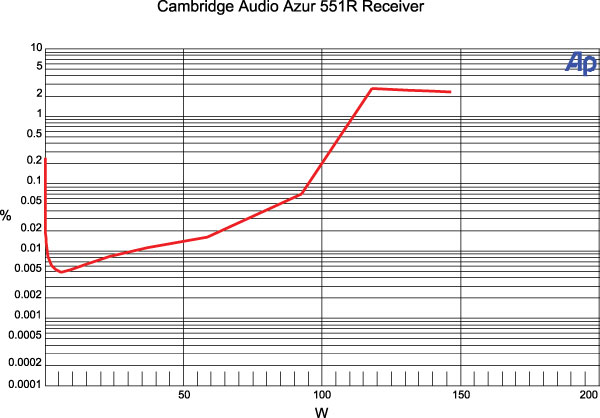
This graph shows that the Azur 551R’s left channel, from CD input to speaker output with two channels driving 8-ohm loads, reaches 0.1 percent distortion at 95.2 watts and 1 percent distortion at 111.3 watts. Into 4 ohms, the amplifier reaches 0.1 percent distortion at 118.6 watts and 1 percent distortion at 139.8 watts.
Response from the multichannel input to the speaker output measures –0.21 decibels at 10 hertz, –0.07 dB at 20 Hz, –0.03 dB at 20 kilohertz, and –2.85 dB at 50 kHz. THD+N from the CD input to the speaker output was less than 0.008 percent at 1 kHz when driving 2.83 volts into an 8-ohm load. Crosstalk at 1 kHz driving 2.83 volts into an 8-ohm load was –85.52 dB left to right and –74.81 dB right to left. The signal-to-noise ratio with an 8-ohm load from 10 Hz to 24 kHz with “A” weighting was –102.48 dBrA.
From the Dolby Digital input to the loudspeaker output, the left channel measures –0.21 dB at 20 Hz and –0.03 dB at 20 kHz. The center channel measures –0.01 dB at 20 Hz and –0.57 dB at 20 kHz, and the left surround channel measures –0.02 dB at 20 Hz and –0.58 dB at 20 kHz. From the Dolby Digital input to the line-level output, the LFE channel is +0.20 dB at 20 Hz when referenced to the level at 40 Hz and reaches the upper 3-dB down point at 106 Hz and the upper 6-dB down point at 112 Hz.—MJP
Video Test Bench
The Cambridge AVR defaults to upconversion mode (Process) for inputs assigned to analog video sources. For sources preset for HDMI, it defaults to Bypass. You can manually change either setting. We no longer test analog inputs, but if you manually change the setting on a digital, HDMI source from Bypass to Process, you’ll get the results shown above. Under these conditions, the Azur 551R’s video deinterlacing and upconversion of an HDMI input from a lower resolution to 1080p are poor.

In the Bypass setting, a 1080p HDMI input is passed through to a 1080p output with no video clipping or resolution losses. Cambridge recommends this default Bypass setting for HDMI sources. We recommend that you always use Bypass for HDMI sources with this AVR. If we were rating the HDMI-to-HDMI performance only in the Bypass mode, the Video Performance rating would be 5. 3D sources and 24-fps material always bypass the video processing.—TJN
